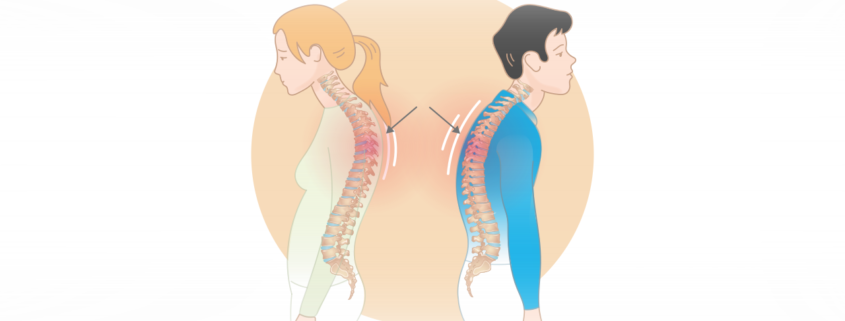Posture

Overview
Good posture, or the proper alignment of the body’s parts when sitting, standing, or lying down, is essential to overall health. It accounts for a significant degree of our daily comfort, ability to move with ease, and even our energy levels. Poor posture, on the other hand, can lead to a multitude of health problems, from back and neck pain to breathing issues or even digestive problems.
Types
There are two main types of posture:
-
- Dynamic Posture: This pertains to how you hold your body when you are moving, like when you’re walking, running, or bending over to pick something up.
-
- Static Posture: This refers to how you hold yourself when you are not moving, like when you are sitting, standing, or sleeping.
Both types play a vital role in your well-being.
Causes
Sometimes poor posture develops because of lifestyle habits or work conditions. For example:
-
- Stress and Emotional Factors: When we are stressed, our muscles tense, causing changes to our posture.
-
- Screen Habits: Spending long periods in front of a computer or bent over a smartphone can lead to slouching.
-
- Occupational Habits: Jobs that require heavy lifting or long periods of sitting or standing can impact posture.
-
- Health Conditions: Certain health conditions such as osteoporosis can lead to posture problems.
Symptoms
Symptoms of poor posture can vary but often include:
-
- Back, neck, or shoulder pain
-
- Headaches
-
- Decrease in flexibility
-
- Difficulty in digesting food
-
- Tiredness and fatigue
If these symptoms persist, it’s time to seek help.
Diagnosis
Often, posture issues are diagnosed through a physical examination. During this exam, a doctor may ask you to sit, stand, and walk so they can observe your posture.
Treatment Options
Regardless of the cause, several treatments can help correct poor posture:
-
- Physical Therapy: Through strength and flexibility exercises, physical therapists can work with you to improve your posture.
-
- Yoga: This holistic practice can improve flexibility, strength, and awareness of your body, thus aiding in posture correction.
-
- Braces and Supports: Sometimes, especially in more severe cases, braces or other supportive devices may be recommended.
-
- Ergonomic Furniture: Using chairs, desks, and other furniture designed to support good posture can be beneficial.
Living With Posture
Living with posture means being mindful of how your body is aligned throughout the day. It may take time and effort to correct poor posture, but the benefits to your health are worth it. Here are some tips:
-
- Be mindful of your posture during everyday activities, like watching TV, washing dishes, or walking.
-
- Take frequent breaks from sitting or standing in one place for too long.
-
- Choose a chair with good lower back support.
-
- Make sure your computer monitor is at eye level.
-
- Practice yoga or pilates to increase your body awareness and help maintain good posture.
When to Seek Help
While mild discomfort from poor posture can be normal, some symptoms warrant immediate medical attention:
-
- Pain that is severe or worsens with activity
-
- Pain that doesn’t improve with rest
-
- Weakness, numbness, or tingling in your arms or legs
-
- Unexpected weight loss
If you experience these symptoms, seek help immediately. With the right knowledge, tools, and medical advice, you can improve your posture and enhance your overall well-being.
